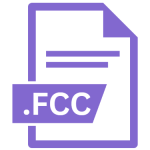.FAN File Extension

Finale Font Annotation
| Developer | MakeMusic |
| Popularity | |
| Category | Settings Files |
| Format | .FAN |
| Cross Platform | Update Soon |
What is an FAN file?
.FAN files, short for Finale Font Annotation, are associated with Finale, a renowned music notation software used by musicians, composers, and arrangers worldwide.
These files play a crucial role in the customization of musical scores by allowing users to define specific font annotations for various elements within their compositions.
From lyrics and dynamics markings to instrument names and expressions, .FAN files store the font settings applied to these annotations, ensuring consistency and aesthetic appeal across musical projects.
More Information.
In the early stages of Finale’s development, users faced challenges in maintaining consistent font styles and sizes across different elements of their scores.
To address this issue, the developers introduced .FAN files as a solution for storing font annotation settings separately from the main score files.
This allowed users to customize fonts for lyrics, articulations, chord symbols, and other annotations independently, ensuring uniformity and flexibility in notation projects.
Origin Of This File.
The genesis of the .FAN file extension can be traced back to the development of Finale, a groundbreaking software introduced by Coda Music Technology (now part of MakeMusic, Inc.) in the 1980s.
As Finale evolved into one of the leading tools for music notation, .FAN files emerged as essential components for managing font annotations within musical scores.
They became instrumental in preserving formatting preferences and enhancing the visual presentation of musical compositions.
File Structure Technical Specification.
.FAN files are typically structured in a proprietary format optimized for storing font annotation data efficiently.
While the exact specifications may vary between different versions of Finale, these files generally include metadata indicating the font attributes such as typeface, size, style, color, and positioning for each annotation category.
The structure may also incorporate references to the corresponding elements within the main score file, facilitating seamless integration and synchronization of font settings.
How to Convert the File?
Converting .FAN files to other formats or vice versa may require specific procedures depending on the desired output format and compatibility requirements. Here’s a general guide on how to approach file conversion:
1. Export Font Settings:
- In Finale, locate the option to export font settings or annotations. This feature may vary depending on the version of Finale you are using, but it’s typically found within the program’s preferences or settings menu.
- Choose the appropriate export format that is compatible with the target application or platform. Common options include MusicXML, MIDI, or PDF, which support font annotations to varying degrees.
- Follow the on-screen prompts to export the font settings to the selected format. Ensure that the exported file includes all necessary font attributes and annotations required for your notation project.
2. Import into Target Application:
- Open the target application where you intend to import the font settings from the .FAN file. This could be another music notation software or a related tool for working with musical scores.
- Locate the option to import font settings or annotations within the target application. This feature may be available through the program’s import menu or preferences section.
- Select the exported file containing the font settings previously saved from Finale. Follow any additional instructions or prompts provided by the target application to complete the import process.
- Verify that the font settings have been successfully imported and applied to the notation project within the target application. Make any necessary adjustments or refinements to ensure consistency and compatibility with your original intent.
3. Manual Replication:
- If direct conversion options are not available or feasible, you may need to manually replicate the font settings from the .FAN file in the target application.
- Open both Finale and the target application side by side, allowing you to reference the font annotations from the .FAN file while recreating them in the target environment.
- Use the font customization tools provided by the target application to match the font styles, sizes, colors, and positioning as closely as possible to the original settings from Finale.
- Take advantage of any available shortcuts or bulk editing features to streamline the manual replication process, especially for projects with extensive font annotations or complex layouts.
4. Consider Compatibility:
- Keep in mind any compatibility issues that may arise when converting font settings between different notation software or file formats. Some applications may not fully support certain font attributes or may interpret them differently, potentially resulting in discrepancies in the final output.
- Test the converted font settings in the target application to ensure they meet your expectations in terms of appearance, layout, and compatibility with other elements of the notation project.
- Make any necessary adjustments or refinements as needed to achieve the desired presentation and functionality across platforms or software environments.
Advantages And Disadvantages.
How to Open FAN?
Open In Windows
- Install Finale on your Windows computer if you haven’t already.
- Double-click on the .FAN file, and it should automatically open in Finale, allowing you to access and modify the font annotation settings.
Open In Linux
- While there’s no native version of Finale for Linux, you can try using compatibility tools like Wine.
- Install Wine on your Linux system.
- Use Wine to install and run Finale.
- Once Finale is running, you can open the .FAN file within the Finale application.
Open In MAC
Open In Android
Open In IOS
Open in Others
- For other platforms or applications, you may need to convert the .FAN file to a more universally supported format like MusicXML.
- Use Finale to export the font settings to MusicXML format.
- Open the MusicXML file in the target application or platform that supports MusicXML import.
- Note that not all applications may fully support font annotations from .FAN files, so you may need to adjust the formatting manually in some cases.












